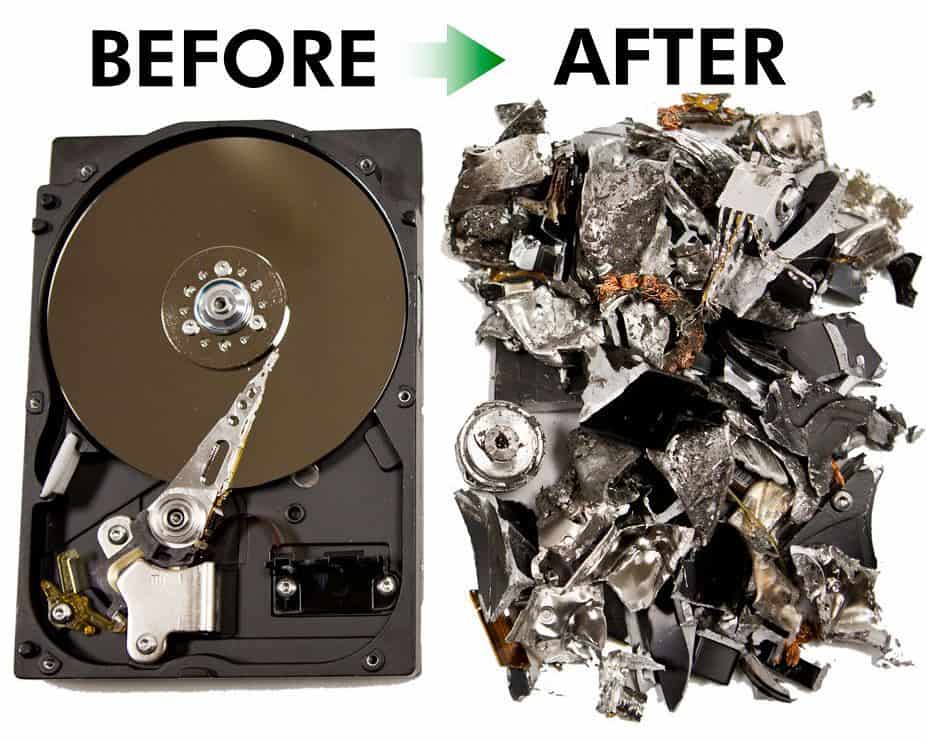Discovering the Significance of Information Damage in the Context of Computer Protection Providers and Protecting Confidential Data
In an era where information breaches are progressively common, the importance of effective information damage can not be overstated. When no longer required, Organizations must adopt rigorous steps to guarantee that sensitive information is not just safeguarded during its lifecycle yet additionally emphatically eliminated. The methods used for data elimination, combined with conformity to legal criteria, play a pivotal role in preserving discretion and depend on. Nevertheless, the implications of these practices expand past mere compliance, influencing a business's online reputation and operational stability in the digital market. What approaches can organizations apply to enhance their data devastation methods?
Recognizing Data Destruction
Information destruction is a crucial part of computer system safety that includes the long-term removal of data from storage devices to avoid unauthorized access and possible data violations. In a significantly digital landscape, organizations face heightened dangers connected with delicate details being improperly accessed or made use of. Effective information damage safeguards versus these hazards, making sure that private dataâEUR" such as consumer information, intellectual home, and monetary recordsâEUR" can not be recuperated after disposal.
Comprehending the value of information damage prolongs past simple compliance with lawful and governing structures; it is essential for maintaining organizational stability and count on. When information is improperly handled or inadequately damaged, the repercussions can be extreme, including financial loss, reputational damages, and lawful liabilities.

Techniques of Information Removal

One prevalent approach is information wiping, which includes overwriting existing data with arbitrary patterns numerous times. This technique provides the initial information irretrievable, making it a popular selection for organizations looking for to secure secret information.
One more technique is degaussing, which utilizes an effective electromagnetic field to interrupt the magnetic domains on storage tools, successfully eliminating the information. This strategy is specifically effective for magnetic media but is not applicable to solid-state drives.
Physical devastation is another robust technique, squashing or entailing the shredding of storage space gadgets. This technique assurances that data healing is essentially impossible, making it perfect for very sensitive information.
Last but not least, encryption can work as a complementary approach to data obliteration. By securing data prior to deletion, organizations can add an extra layer of protection, ensuring that even if residues are recouped, they continue to be unattainable without the decryption key. Each technique needs to be picked based on the level of information level of sensitivity and the particular safety needs of the organization.
Legal Conformity and Data Protection
Organizations have to navigate a complicated landscape of legal requirements associated with data protection, specifically after implementing approaches of data elimination. Various guidelines, such as the General Data Security Guideline (GDPR) and the Health Insurance Policy Portability and Responsibility Act (HIPAA), enforce rigid guidelines on how organizations must dispose and handle of delicate data. Failing to abide by these policies can bring about considerable lawful effects, consisting of significant fines and reputational damage.
Data devastation processes need to be thoroughly documented to show compliance with appropriate regulations and requirements. This documents not only functions as evidence of adherence to legal responsibilities but also highlights a commitment to protecting delicate information. Organizations should likewise develop clear plans relating to information retention and devastation timelines, ensuring that data is not held longer than needed.

Furthermore, regular audits and assessments of data devastation methods are vital to maintain conformity and go to the website adapt to advancing lawful frameworks (data destruction). By proactively attending to legal needs, companies can reduce threats related to information violations and demonstrate their dedication to information protection. Ultimately, prioritizing legal compliance in information devastation processes is not simply a governing commitment, yet a basic facet of a durable data safety and security strategy
Effect On Business Reputation
The reputation of a business can be significantly affected by its approach to information damage and administration. In today's digital landscape, where information violations can happen anytime, the failure to effectively deal with delicate info can result in serious effects. Organizations that improperly take care of information damage danger revealing private consumer info, which not just violates personal privacy laws yet likewise moved here deteriorates depend on among customers and stakeholders.
A damaged track record can cause decreased client commitment, as customers become reluctant to engage with an organization that has shown oversight in safeguarding their data. Unfavorable promotion surrounding an information violation can have a lasting result, as potential clients may be prevented by the viewed lack of safety and security. This can cause a straight decrease in income and market share.
Furthermore, services that prioritize data damage as part of their protection technique can enhance their credibility by showcasing their commitment to securing sensitive details. By adopting rigorous information monitoring methods, organizations can not just minimize threats yet additionally place themselves as credible entities in their corresponding sectors, consequently reinforcing their total brand name image.

Finest Practices for Secure Disposal
Applying ideal practices for secure disposal of information is vital for reducing risks connected with information violations and ensuring conformity with personal privacy regulations. Organizations should embrace a thorough information disposal policy that outlines treatments for both digital and physical information destruction.
For physical data storage space gadgets, such as tough drives, shredding or degaussing is suggested to avoid data recovery. Furthermore, companies must maintain a chain of guardianship paperwork throughout the disposal process, ensuring liability and traceability of disposed products.
For electronic information, making use of software program that complies with market standards for information cleaning is look at this now vital. This software application ought to overwrite existing data numerous times, making recuperation essentially difficult. It is additionally essential to verify the effectiveness of the information destruction process via audits or third-party analyses.
Educating staff members on protected disposal practices adds another layer of security, as human error can frequently lead to data direct exposure. Regularly evaluating and upgrading disposal policies makes certain positioning with advancing regulations and technological innovations. By carrying out these best practices, organizations can dramatically decrease the risk of unauthorized data accessibility and improve their overall data defense technique.
Conclusion
Finally, information damage is an essential facet of computer system safety solutions that ensures the security of confidential information from unapproved access. Carrying out efficient methods of information removal, sticking to lawful compliance, and acknowledging the impact on service reputation are essential elements of an extensive data safety and security approach. By taking on ideal practices for protected disposal, organizations can promote count on with clients and protect delicate information, eventually adding to an extra safe and secure digital landscape.
In an age where data breaches are increasingly common, the value of efficient data destruction can not be overemphasized.Data damage is a critical component of computer system safety and security that involves the permanent elimination of data from storage gadgets to protect against unauthorized access and possible information breaches. Organizations must additionally develop clear plans pertaining to information retention and damage timelines, making certain that information is not held longer than needed.
By proactively addressing lawful needs, companies can alleviate risks associated with information violations and demonstrate their commitment to information safety (data destruction). Inevitably, focusing on lawful conformity in data damage processes is not simply a regulative obligation, yet a fundamental element of a durable data safety strategy
Comments on “Ideal Practices for Data Destruction to Strengthen Your Cyber Security Structure”